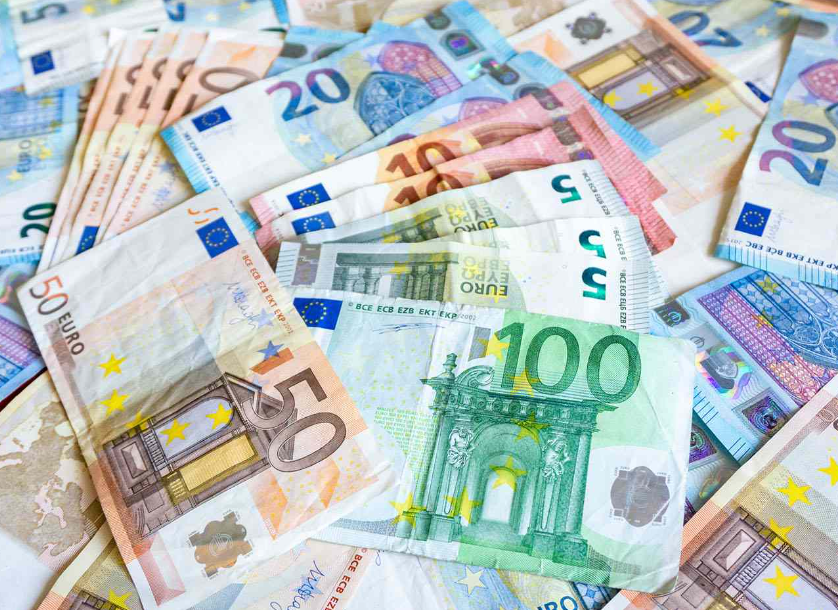The Azerbaijani Manat is the Azerbaijan National Currency, a country located in the South Caucasus region of Eurasia. In this article, we will take a detailed look at the history, design, denominations, exchange rates, and other important aspects of the Azerbaijani Manat. We will also explore how it has evolved over time, and how it has been impacted by various economic and political factors. So, whether you are planning a trip to Azerbaijan, interested in global currencies, or simply want to expand your knowledge, keep reading to learn more about the Azerbaijani Manat.
History of the Azerbaijan National Currency
The Azerbaijani Manat was first introduced on August 15, 1992, replacing the Soviet ruble at a rate of 10 rubles to 1 Manat. The first series of banknotes were printed in denominations of 1, 5, 10, 50, and 250 Manats, while coins were minted in denominations of 1, 3, 5, 10, 20, and 50 Qəpik (subunits of Manat).
In 2006, a new series of banknotes was introduced, featuring prominent Azerbaijani figures on the front and iconic landmarks on the back. The denominations of the new series were 1, 5, 10, 20, 50, and 100 Manats. Similarly, new coins were also introduced, with denominations of 1, 3, 5, 10, 20, and 50 Qəpik.
Design of Azerbaijani Manat
The design of Azerbaijani Manat is inspired by the rich history and culture of Azerbaijan. The front of each banknote features a prominent figure from Azerbaijan’s history, culture, or politics, while the back showcases iconic landmarks, natural wonders, or cultural artifacts. The banknotes are also decorated with intricate patterns, security features, and metallic ink.
The coins, on the other hand, feature the coat of arms of Azerbaijan on the front and various designs and denominations on the back. The smaller denominations, such as 1 and 3 Qəpik, are made of copper-plated steel, while the larger denominations, such as 10 and 50 Qəpik, are made of nickel-plated steel.
Denominations of Azerbaijani Manat
As of 2023, the Azerbaijani Manat is issued in six denominations of banknotes and six denominations of coins. The banknotes have denominations of 1, 5, 10, 20, 50, and 100 Manats, while the coins have denominations of 1, 3, 5, 10, 20, and 50 Qəpik.
The 1 and 3 Qəpik coins are rarely used in circulation, while the 5 and 10 Qəpik coins are used mainly for public transport fares. The 20 and 50 Qəpik coins are more commonly used for small purchases and as change. The 1 and 5 Manat banknotes are used for everyday transactions, while the higher denominations are used for larger purchases and investments.
Exchange Rates of Azerbaijan National Currency
The exchange rate of Azerbaijani Manat has been volatile in the past due to various economic and political factors. In 2023, the exchange rate of Azerbaijani Manat is approximately 1.7 Manats per US Dollar. However, the exchange rate can fluctuate depending on various factors such as global economic conditions, political stability, inflation, and interest rates. The Central Bank of Azerbaijan regulates the exchange rate through its monetary policy, which aims to maintain price stability and promote economic growth.
Security Features of Azerbaijani Manat
The Azerbaijani Manat banknotes are designed with various security features to prevent counterfeiting and ensure authenticity. These features include watermark, metallic thread, see-through window, microprinting, and special ink that changes color when viewed from different angles. Additionally, the coins have distinctive designs and are made of specific metals to prevent fraud.
Impact of Economic Factors on Azerbaijan National Currency
The Azerbaijani Manat has been impacted by various economic factors in the past, including inflation, oil prices, and global economic conditions. For example, the Manat experienced significant inflation in the early 2000s due to an increase in money supply, leading to a devaluation of the currency. Similarly, the Manat was impacted by the drop in oil prices in 2014, which led to a decrease in exports and a devaluation of the currency.
However, the Azerbaijani government has taken steps to stabilize the economy and prevent volatility in the currency. These measures include diversification of the economy, implementation of monetary and fiscal policies, and investment in infrastructure and human capital.
FAQs
- Can I exchange Azerbaijani Manat outside of Azerbaijan?
Yes, you can exchange Azerbaijani Manat in many countries through authorized exchange centers or banks.
- Are there any restrictions on carrying Azerbaijani Manat in or out of Azerbaijan?
Yes, there are restrictions on carrying large amounts of Azerbaijani Manat in or out of the country. It is recommended to check with the customs and currency regulations before traveling.
- What is the symbol for Azerbaijani Manat?
The symbol for Azerbaijani Manat is “₼”.
- Is the Azerbaijani Manat accepted in other countries?
No, the Azerbaijani Manat is not widely accepted in other countries. It is recommended to exchange it for the local currency before traveling.
- How can I learn more about the Azerbaijani Manat?
You can visit the Central Bank of Azerbaijan’s website for more information on the Azerbaijani Manat.
Conclusion
In conclusion, the Azerbaijani Manat is an important currency in the South Caucasus region, with a rich history, intricate design, and complex economic factors impacting its value. Whether you are traveling to Azerbaijan or simply interested in global currencies, understanding the Azerbaijani Manat is a valuable knowledge.
References
- Central Bank of Azerbaijan. (2021). About Azerbaijani Manat. Retrieved from https://www.cbar.az/monetary-policy/about-azn
- Investopedia. (2021). AZN (Azerbaijani Manat). Retrieved from https://www.investopedia.com/terms/forex/a/azn-azerbaijani-manat.asp
- National Bank of Kazakhstan. (2020). Comparison of Security Features of Modern Banknotes of National and Foreign Currencies. Retrieved from https://nationalbank.kz/files/Modern_banknote_features_eng.pdf

